Education
CANADIAN PONY CLUB ACHIEVEMENT STANDARDS
Very brief descriptions of the Canadian Pony Club achievement levels and testing procedures are included here and links are provided in the outlines of each level to more detailed requirements and lesson plans. Additional information such as qualifications, tips and hints, reading lists, and specific Regional information is also available.
The official Canadian Pony Club Testing Procedures including all forms are available for free downloading. Most people with a laser or inkjet printer should be able to print them out so make sure you or your branch have the most up to date information. Due to the large size, the testing procedures are split into an A/B Testing Procedures package and a C/D Testing Procedures package.
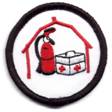 |
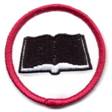 |
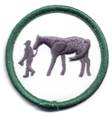 |
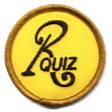 |
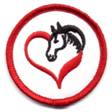 |
General Testing Procedures
All tests for achievement standards of B and higher must be done by a panel of examiners who have been recognized by the Canadian Pony Club National Testing Committee as National examiners. All National Examiners are assigned a grading which limits the highest achievement level at which they may test and must meet training and experience requirements before upgrading. Most National Examiners are past Pony Club members of A, HA, or RA standing.
The accreditation and selection of examiners for achievement tests from the D to C2 level are under Regional control. Some Regions require that achievement tests at the C1 or C2 level be done at one or two centralized locations in the Region and they may require that one or more National Examiners be included in the panel of examiners.
Each Region sets specific requirements for the testers in that Region who will carry out the basic level tests. In most cases, these testers are current Active Pony Club members who have achieved a level several grades above the ones they are allowed to test and who have attended clinics or taken other instruction as required by the Region to qualify.
At the basic levels, the achievement tests are carried out at the candidate's local branch. At many branches, testing opportunities are offered twice a year, once in the spring and once in the fall, so that a rider can take two tests a year. Where this twice a year pattern presents difficulties, branches may offer only one opportunity, or may join forces with another branch nearby to test jointly.
D and D1 candidates can be tested by an accredited Pony Club Tester from their own Branches. From the D2 level on, the Tester must be from another Pony Club Branch.
The Canadian Pony Club marking system for practical tests is: 10+ Outstanding 10 Excellent 9 Very Good 8 Good 7 Satisfactory 6.5 Sufficient 6 Almost sufficient 5 Insufficient 4 Unsatisfactory 3 Poor 2 Bad 1 Very bad 0 Not executed
The passing mark in all Canadian Pony Club written and practical tests is 65%. Passing marks in the written test and in all phases of the practical test are required for a successful upgrading. There are usually 2 phases to the practical test, riding and stable management, however at the higher levels, other phases such as teaching are added. A mark of 90% on the written test, 90% in riding, and 50% in stable management is NOT a pass.
ACHIEVEMENT LEVELS IN THE CANADIAN PONY CLUB
The following are extremely brief descriptions of each level so that visitors can determine whether or not they wish to look at the more detailed requirements for each stage. Since they are brief, they do not include all of the requirements for each stage.
E Level
D Level
Detailed D Level Standards and Lesson Plans to help in attaining them are available.
D1 Level
Detailed D1 Level Standards and Lesson Plans to help in attaining them are available.
D2 Level
Detailed D2 Level Standards and Lesson Plans to help in attaining them are available.
C Level
Detailed C Level Standards and Lesson Plans to help in attaining them are available.
C1 Level
Detailed C1 Level Standards and Lesson Plans to help in attaining them are available.
C2 Level
Detailed C2 Level Standards and Lesson Plans to help in attaining them are available.
B Level
B candidates are required to negotiate stadium fences to 3'6" and cross country to 3'3"
A normal B test can be expected to take a complete day.
The following is the description of a B from the Examiners Handbook
What is a 'B'?
- A young horseperson capable of carrying out the orders given him/her in the stable and of exercising a schooled horse without disturbing or unsettling him/her.
- Performance in all practical phases to be carried out in an efficient, workmanlike manner, demonstrating that (s)he has developed these qualities through experience combined with thoughtfulness.
Proper interpretation of the standards for B and up requires much more information than for the D to C2 levels. Some of that information is provided in the B Level Standards and links to much more detailed information are available from that page.
B2 Level
B2's must jump stadium fences to 3'9" and cross country fences to 3'3"
A typical B2 test will take up a full day - virtually from dawn to dusk.
The following is the description of a B2 from the Examiners Handbook
What is a 'B2'?
- An intermediate stage between 'B' and 'A' Standards. Candidates will maintain efficiency achieved for the 'B' Standard, plus acquire additional skills and knowledge.
- Candidates will be able to demonstrate the fitting of lungeing equipment, discuss and demonstrate the lungeing of a horse for exercise. Candidates will demonstrate they are gaining experience in teaching young Pony Clubbers.
HA Level
The successful HA candidate must be extremely competent in stable management and have a high degree of knowledge about equine anatomy, health, feeds and nutrition, illnesses, unsoundnesses, and foot care as well as many other items related to the care and management of a stable.
A typical HA examination is extremely thorough and is about three days in duration!
The following is the description of an HA from the Examiners Handbook
What is an 'HA'?
- Able to take sole charge of a stable in all phases of stable and horse management in an efficient and workmanlike manner for at least two weeks. These qualities are developed through experience as well as theoretical knowledge. An 'HA' can school and exercise trained and green horses on the lunge showing sound knowledge of equipment, theory and demonstrating competent lungeing skills. An 'HA' is capable of teaching a safe, interesting and fun lesson to riders up to and including 'C' levels.
RA Level
The RA test is very comprehensive and typically lasts for two days
The following is the description of an RA from the Examiners Handbook
What is an 'RA'?
- An all-round active and effective horseperson. Capable of carrying out the basic training of a young horse in accordance with the principles of the Pony Club. Capable of correcting faults in an older horse and improving his/her way of going. Able to ride an unknown and/or green horse on the flat and over stadium jumps at all paces. A high standard of riding in all phases, demonstrating good position, firm seat, ability to ride a horse freely forward on contact. Ability to perform all movements described in the 'Manual of Horsemanship' and 'Training the Young Pony'. Good feeling of rhythm and co-ordination, style and tactfulness allowing presentation of a polished performance.
More information is provided in the RA Level Standards and links to much more detailed information are available from that page.
A Level
The A level certificate and a blue disk are awarded automatically to those candidates who have successfully passed both the HA and RA standards.
QUALIFICATIONS FOR UPGRADING
To qualify for any testing, candidates must:
- In the opinion of the Branch Instructor and the District Commissioner, be capable in all the requirements listed in the Testing Procedures for the Stage they wish to attempt.
- Have been Pony Club members for at least six months. (At the discretion of the District Commissioner, exceptions may be made for those who join at an older age.)
- Have attended at least 60% of Branch meetings since previous upgrading (or in the case of the Stage 'D' Test, since becoming a member). For candidates at the B level or higher, the attendance requirement is that their attendance is "reasonable".
- Be in good Branch standing (i.e. fees paid).
- Have passed all of the stages below the one for which they are testing.
- Have passed the Written/Oral qualifying test.
- Have attained minimum age requirements. Minimum ages for tests:
(All ages below are as of January 1st. of the year of testing)- Stage D Test 7 years of age or over.
- Stage D1 Test 8 years of age or over.
- Stage D2 Test 9 years of age or over.
- Stage C Test 10 years of age or over.
- Stage B Test 14 years of age or over.
- Stage HA or RA Test 16 years of age or over.
- HA and RA candidates must attend a screening clinic prior to the practical phase. Some Regions may require attendance at screening clinics for B and B2 candidates as well.
- B, B2, HA, and RA candidates must have completed a first aid course.
- B, B2, HA, and RA candidates must submit completed application forms together with fees and a copy of their first aid certificate.
TIPS AND HINTS
Candidate Should Bring
- An ASTM/SEI approved helmet and shoes or boots with a heel. The helmet chin strap MUST be fastened whenever the candidate is mounted.
- You MUST have a properly completed Medical armband for testing at all levels.
- Candidates will NOT BE ALLOWED TO RIDE and hence will not pass the test if they do not have this minimal equipment.
- A mount capable of doing the movements required for the test level. It is not the responsibility of the examiner to take into account the greenness of the mount etc. The mount should be suitably groomed for the test level.
- Proper tack for the horse based on the test requirements. All tack MUST be safe and should be clean and in good condition.
- Grooming kit appropriate for your test level, halter, leadshank.
- Riding and stable clothing suitable for the test level. Many candidates wear sweat shirts and track pants over their riding clothes for stable work. This is acceptable. Running shoes, shorts, tube tops, etc are not suitable.
- For all test levels above D, bring your old certificate.
- Stable tools (manure fork, shovel, rake, etc) as required for test level. (check to see if there are some you can use already at the stable; there usually are)
- Sufficient clean bandages and cottons if bandaging is included in your test requirements.
GENERAL TIPS--ALL LEVELS
- RELAX! There has never been a reported case of the examiner biting a candidate.
- THINK about your answer to each question but do not delay so long that the examiner thinks you don't know the answer.
- Be prepared to give a REASON for your answer. This will be much more important at the higher levels.
- PRACTICE at home. It's nearly impossible to do something under test conditions and look competent if you're not used to doing it.
- BE ON TIME or a little early.
- DON'T BRING anything you can't use or don't understand the use for. If your mount has a piece of tack and you don't know why, ask your instructor before you come to the testing
- PARENTS should not normally be at the test site except to bring the candidates and pick them up. Your branch Testing Rep or D.C. will be present during the testing. If parents MUST be on the site, they should stay well away from the candidates and examiner.
